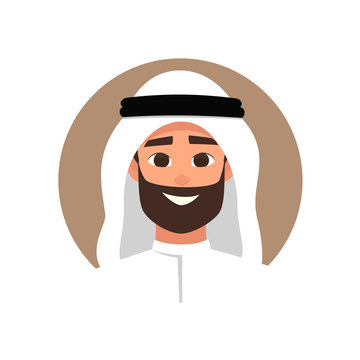Double Wall Corrugated Pipe (DWC)
- Home
- Products
- Wastewater
- PP and HDPE Pipes
- Double Wall Corrugated Pipe (DWC)


Standards and Specifications:
IS: 16098 (Part-2)
Structured-Wall Plastics Piping Systems for non-pressure drainage and sewerage -specification Part-2: Pipes and fittings with non-smooth external surface, Type B
ISO: 21138 (Part-3)
Plastics piping systems for non-pressure underground drainage and sewerage -Structured-wall piping systems of unplasticized poly (vinyl chloride) (PVC-U), Polypropylene (PP) and Polyethylene (PE) -Part 3: Pipes and fittings with non-smooth external surface, Type B
BS EN 13476 (Part-3)
Plastics piping systems for non-pressure underground drainage and sewerage. Structured-wall piping systems of unplasticized poly (vinyl chloride) (PVC-U), Polypropylene (PP) and Polyethylene (PE). Specifications for pipes and fittings with smooth internal and profiled external surface and the system, Type B
Integration:
Pipes and Fittings are made from PE/PP which is manufactured and controlled by Alwasail at every stage of the process. Also German corrugation technology provides highest stiffness to products. This backward integration helps us consistently maintain the highest quality for all pipes and fittings.
Skills Development & Training
Programme for Installers:
Alwasail provides training to persons who install DWC pipes and fittings throughout the year by updating them about modern installation techniques and how to make installations more effectively and professionally.
Dimensions & Sizes:
Mean inside Diameter: The mean inside diameter, at any point and tolerances shall be as given in Table 5 of IS: 16098 (Part-2) and shall be measured according to the method given in IS: 12235 (Part-1 ).
Wall Thickness: The nominal wall thickness, e4, es, shall be in accordance with Table 5 of IS: 16098 (Part-2). Tolerances in inside diameters shall be those given in IS: 16098 (Part-2).
Length of pipe: Effective length of pipes (I) without sockets shall be not less than that specified by the manufacturer when measured as shown Figure. 1 of IS: 16098 (Part- 2). The lengths may be supplied as agreed to between the purchaser and the manufacturer.
PIPES NOMINAL SIZE DN ID _MM_ 100,135,150,170,200,250,300,400,500,600,800
Standard Length:
6 M & 12 M straight pipes or coil 50m+ 100m
Color Code:
SN 4 – Outside wall Black and inside wall White

SN 8 – Outside wall Black and inside wall (Orange or Green)

Salient Features:

Key Features:


- Storm water applications.
- Sewerage applications
- Water treatment plants
- Rainwater harvesting and ground water recharge
- Road/highway cross drainage
- Sea outfall and intake lines.
- Landfill drainage systems.
- Storage tanks (water, food, chemicals, mineral oils, and more) and manholes.
- Air ducts, tunnels, mining, and ventilation applications.
- Irrigation.
Product Range:
 Alwasail offers a wide variety of sizes, ranging from 110 mm to 800 mm in diameter, available in SN 4 and SN 8 stiffness classes. Therefore, you can meet any requirement with this extensive range of DWC pipes.
Alwasail offers a wide variety of sizes, ranging from 110 mm to 800 mm in diameter, available in SN 4 and SN 8 stiffness classes. Therefore, you can meet any requirement with this extensive range of DWC pipes.
Dimension of DWC:

Jointing Procedure:
Pipes up to 250mm as well as 500 and 800mm sizes are supplied plain ended with seprate couplers whereas 300mm and 400mm sizes are supplied in both varieties i.e. with integral sockets as well as with separate couplers. Procedure for jointing these two types of pipes is given below:
Jointing procedure for pipes with integral socket
- Take two pipes with integral sockets and one EPDM sealing ring. Ensure that the pipe socket is free from any damage.
- Fit EPDM rubber seal into the first corrugation of the plain ended pipe, making sure that the seal is correctly placed.
- Ensure the seal is not twisted.

- Align the socket end of pipe with non socket end of the other pipe.
- Clean and remove dirt/dust/ water etc. from the pipe ends and sockets.
- Mount the fixture on plain end of pipe and on socketed end of other pipe for Joining. Fixture should be duly placed in the grooves for better holding.
- Apply Silaid rubber lubricant on the EPDM rubber ring and the inner surface of socket.
- Place the pulling arms of the fixture on either side on the appropriate pin.
- Pull the pipes in to the socket till it reaches the stopper end.
- Remove the fixture and clean extra lubricant from the pipe ends.
- Ensure that the fitment is secure and the socket is not damaged or broken or burst/open anywhere. Continue the same process for all socketed pipe joints.
Jointing Procedure for Plain Ended Pipes
- Take two pipes, two sealing rings, and one coupler.
- Fit EPDM rubber rings into the first corrugation of each pipe, making sure that the seal is correctly placed.
- Clean the pipe ends, socket of the coupler, and rubber sealing rings, and apply lubricant on the sealing ring placed on the pipe ends and inside of the coupler socket up to the pipe stopper.
- Align the pipe ends and coupler socket, face to face, and put the jointing fixture over the pipe end and coupler. With the help of the fixture, pull the coupler into the pipe until the pipe reaches the stopper end.
- Follow the same procedure for joining the coupler socket to another plain-ended pipe.
For more information about this product and its related items, you may check and browse the catalog below:





